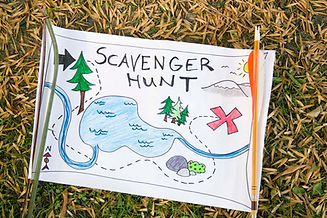
The hidden treasure
Why map?
A map is a visual representation of a specific area or region and is commonly used to convey information about different locations, routes, and boundaries. Maps serve various purposes, including location identification, navigation, geographical information and environmental monitoring. The animals, however, do not have the ability to read maps. How do they determine their location? Animals use clues such as landmarks, scents, and sounds to find their way. They may also rely on an innate sense of direction or rely on other animals for guidance. Let's try this activity to test if the map is useful or not.
Where is my nut?
Squirrels bury nuts as a survival strategy, known as caching. This behavior is crucial for ensuring a food supply during scarcity. Squirrels have remarkable spatial memory and a keen sense of smell, aiding in locating their buried treasures. They carefully bury nuts in various locations, creating a cache that serves as a backup pantry. However, they don't solely rely on memory; instead, they use environmental information and landmarks to recover their stash. This burying and retrieval cycle not only sustains them through lean times but also contributes to the dispersal and propagation of trees.

Treasure Hunt

You can visit somewhere along the Water of Leith or anywhere you choose. Children and parents take turns hiding berries or pasta ("the treasure"), then draw a map of the surroundings to show where the treasure is hidden. The map should include landmarks such as trees, rocks, and bridges. The treasure should be hidden in plain sight, so that you can locate it easily by reading the map. A map serves as a guide, but you have to use your imagination and creativity to discover the exact location. Then its is time to search for the treasure. Whoever finds the treasure first will be the happy squirrel who will have delicious big meals in the freezing winter!

